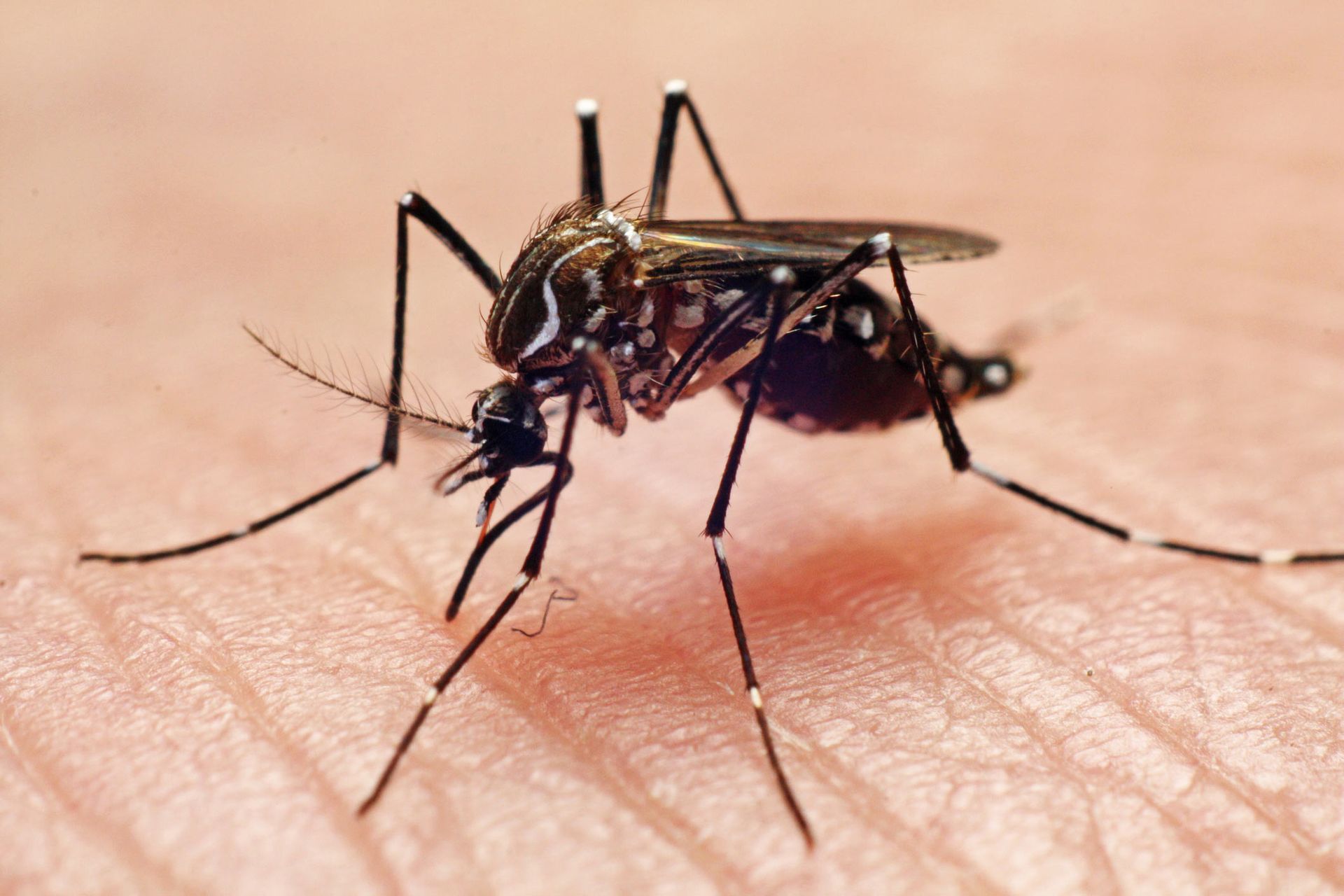Bee & Mosquito Control Services
Bee removal is required when the bees' presence constitutes a danger to humans or their pets.
Despite the honey bees' painful sting people generally hold bees in high regard. This is most likely due to their usefulness as pollinators and as producers of honey, their social nature, and their diligence. Although a honey bee sting can be deadly to those with allergies, virtually all other bee species are non-aggressive if undisturbed, and many cannot sting at all.
The Three Main Types of Honey Bees
- Africanized Bees are a strain of bees that have been in the Southern United States for about 20 years. These bees are extremely aggressive, and several deaths per year in the U.S. are attributed to bee attacks. In appearance, killer bees resemble any other honey bee. Their main threat is their attitude. This type of bee always requires professional bee removal. The Africanized bee does not need an excuse to attack. They protect their hive and queen at a larger radius. Again unlike the European honey bee, the Africanized bee may pursue intruders for up to a mile and remain aggravated for up to 24 hours.
- European bees for the most part are not a threat unless aggravated which can occur if they feel their hive is in danger. Running from or swatting at flying bees is not recommended since all you will accomplish is to aggravate them.
- The most common stinging bee is the
honey bee, introduced into this country from Europe in the 17th century. Professional bee removal is necessary only when their presence becomes threatening. This bees' stinger, which resembles a hypodermic needle with barbs, is used to inject a mixture of alkali venom and acid into the skin. The alkali venom contains several kinds of proteins and enzymes which are believed to cause allergic reactions of varying degrees in humans.
Sting reactions, which may increase with succeeding stings, include:
- A choking sensation or difficulty in breathing.
- A skin rash similar to hives
- A dry cough, sneezing or asthma.
- Lips turning blue.
- A rapid pulse and a drop in blood pressure.
For severe reactions, medical assistance should be sought immediately.
Instead of immediately approaching bees, it is wise to observe them from a safe location and then call for professional bee removal. Do not use sprays, throw objects, or attempt to discourage their presence in any way at this point. It is very important to get rid of the honey also, especially if the bees have taken up residence in a wall, attic, or other home structure. Leftover honey is certain to attract pests to a home.
When resting swarms are treated with pesticides for bee removal, the novice may not thoroughly eradicate all the bees. The survivors may take on a very aggressive attitude and, if the queen is displaced at a distance, the remaining bees will search the vicinity for her. This activity can cause aggravation for bees and humans alike.
Proper bee removal must take into account the location of the hive. The two most common locations are Trees & Homes
- Trees: The hives are usually found in trees either on the branch or in a hole. Honeybees can also move into vacant bird and owl boxes.
- Homes: Honeybees will move into any structure that they feel can facilitate their honey harvesting. In wood frame homes, bees prefer the areas between the studs can store enough honey to fill the space from the ceiling to the floor. The honey can be removed from either side of the wall preferably the softer side as part of the overall bee removal.
- Stucco exteriors are more difficult to cut than wood.
- Block homes are also susceptible to bee invasions when there is a hole on the outside through which they can enter. Concrete stacked blocks stacked create vertical columns where honey can be stored.
- Soffits also have voids where honey bees can get inside and build their honeycombs.
- Sheds often have a raised floor where the bees can move in and attach their nest to the underside of the shed floor.
- Water Meters all have a hole in the lid for easy opening through which bees can enter.
- Mobile homes have plywood flooring with fiberglass which is topped by a plastic type liner. Honeybees like to move in to certain sections under the floor where there is little or no fiberglass. The bee removal procedure may not be able to be done from underneath.
- Construction sites are common place to attract migrating swarms, especially if their original homes nearby are destroyed during land development.
- Power poles that are hollow inside, such as ones made of cement, provide ample room for honeybees and are they often seen flying near the top of the pole.
- Honeybees can be found anywhere there is enough space for them to build their honeycombs and store their honey.
- Other structures can include signs, fences, furniture, flower pots, garbage cans, RV's and campers, wire spools, boats, light fixtures, dog houses, and under porches and sheds.
We are certified professionals and are fully trained in all types of bee and wasp removal. We are equipped with proper protective clothing and appropriate fumigation products.
We provide bee removal in
Tampa, Clearwater, St Pete, Brandon, New Port Richey, Land O Lakes, Holiday, Tarpon Springs
and Bradenton.
Mosquito Control
Mosquitos are pesky critters that tend to thrive in water near homes & businesses ready to feed on nearby human hosts. Mosquitos can breed both indoors & outdoors & bite anytime, day or night. Although an itchy bump may be your worst problem, mosquitos are known to carry the Zika virus which can be severely harmful. Reduce the spread of disease and avoid the constant irritation of these small pests with mosquito control from Pestgo. We have chemical free solutions available with our natural mosquito defense system. Contact us today for more information!
Work with our team today to schedule bee or mosquito control services: (813) 875-3083
Contact Information
Phone: (813) 875-3083
Address: 4425 N Cortez Ave, Tampa, FL 33614
Hours of Operation:
- Mon - Fri
- -
- Saturday
- -
- Sunday
- Closed
Our Location

